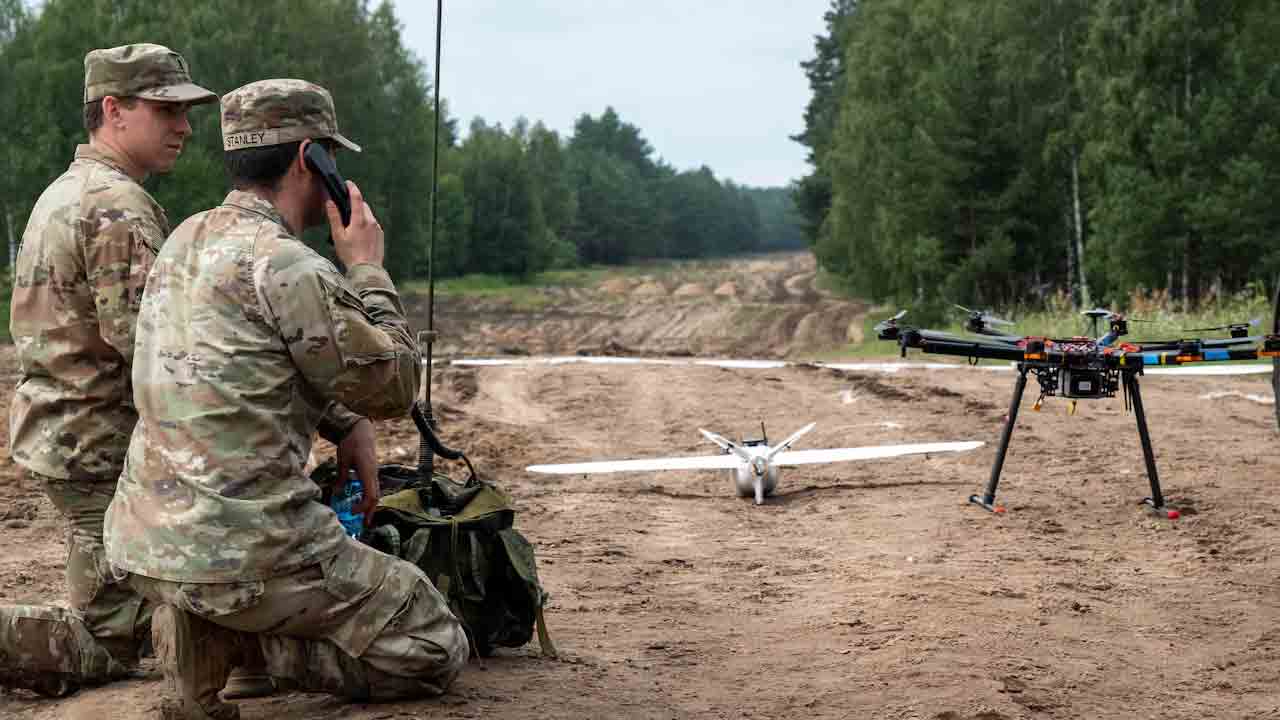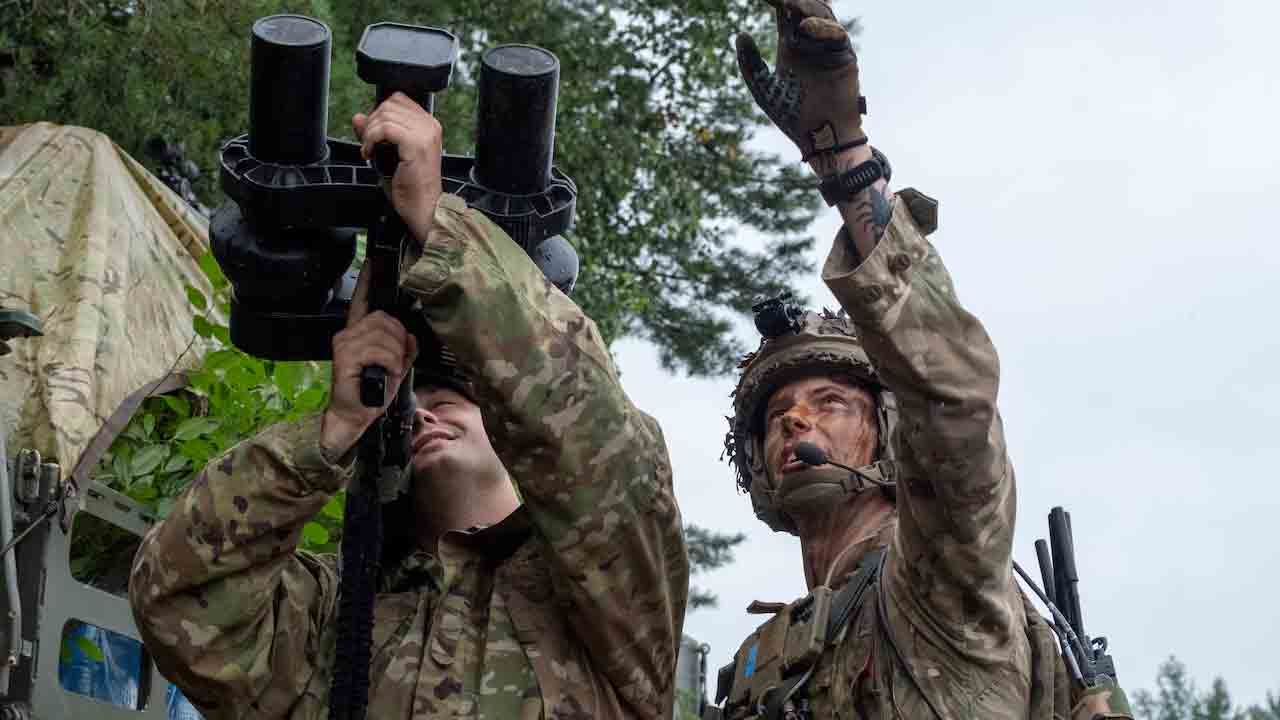Soldiers of the 2nd Cavalry Regiment of the US Army demonstrated the ability to detect, follow and disable several drones using the Ballistic Low Altitude Drone Engineering (Blade) system, integrated in a Stryker-Vehicle, during a live fire exercise on the Bemowo Piskie training field in the northeast of Poland on 1 August.
The activity was part of Project Flytrap 4.0, aimed at the development of new tactics and technologies for combating drones.
According to David Goldstein, leader of anti-UAS systems at the Army Combat Capabilities Development Command Armamente Center, some air threats were launched simultaneously, which required rapid reactions:
“The system eliminated one goal and committed another within a few seconds,” he emphasized.
+ Russia publishes video of artillery fire by rocket ship Veliky Ustyug in the Caspian Sea
Drone -fighting technology

By combining precision radar, fire control software against drones and the CROWS platform, Blade enables the operator to identify, follow and calculate interception points in real-time goals. During the exercise in Poland, the system was tested with the .50 Caliber M2 machinery, where salvos were fired at air targets at distances from 500 to 800 meters.
In addition to the shooting exercises, Blade also participated in training scenarios without ammunition, whereby detection and tracking of threats were simulated.
Integration with allies and new solutions

Project Flytrap 4.0 brought soldiers from the 2nd Cavalry Regiment of the US and the 1st Battaljon, Royal Yorkshire Regiment from the VK in joint exercises in which the use of new anti-drone technologies was investigated.
The program also introduced the Cnalt software, developed by the Armamental Center, which offers fire control and tactical visualization tools to shorten the reaction time in the Kill Chain. With only 15 minutes of training, soldiers were able to operate the system and make recommendations for engagement based on real -time sensor data.
Source and images: defense.gov. This content was created with the help of AI and revised by the editors.

